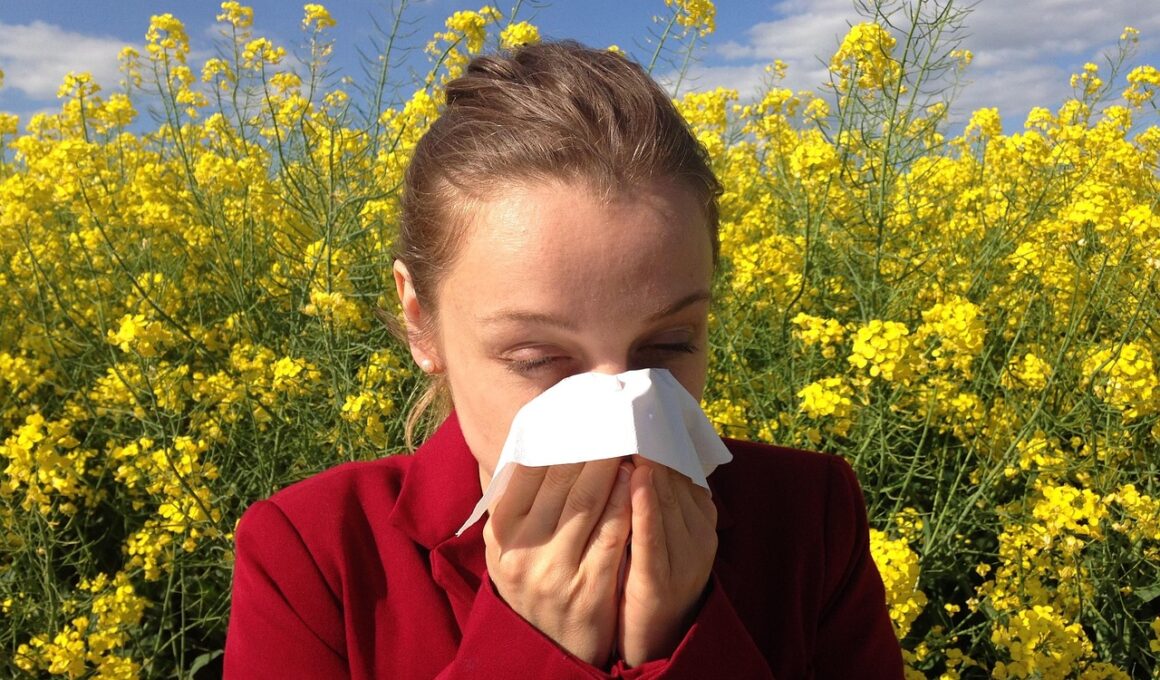Understanding Allergies in Dogs and How to Manage Them
Dog allergies are a common issue faced by many pet owners. Allergies can be caused by various factors, including environmental triggers, food ingredients, or even flea bites. Understanding the type of allergy your dog has is essential for effective management. Environmental allergies are often seasonal and can include pollen, grass, or mold, while food allergies might cause gastrointestinal issues or skin irritations. Flea allergies, on the other hand, occur when a dog has an allergic reaction to flea saliva. Observing your dog’s behavior and physical condition can help identify the symptoms of allergies, which can manifest as itchy skin, excessive scratching, hot spots, or ear infections. Knowing what to look for is crucial when it comes to managing your dog’s allergies. Regular veterinary check-ups will also assist in identifying allergies that may not be immediately apparent. Your veterinarian might recommend allergy tests, and from there, they can devise a personalized treatment plan. This medical guidance is vital for any owner dealing with an allergic pet. Additionally, maintaining a clean environment is crucial, as it may help alleviate some allergy symptoms.
Once you’ve identified the allergens that affect your dog, managing these allergies becomes crucial. One effective strategy is to minimize exposure to outdoor allergens during peak seasons. Limiting your dog’s outdoor time in the early morning or late afternoon when pollen levels are elevated can make a difference. Regular baths using hypoallergenic shampoos can help soothe irritated skin, wash away allergens, and provide temporary relief. Inside the home, consider using air purifiers to reduce airborne allergens, maintain a dust-free environment, and vacuum regularly using HEPA filters. Using washable bedding can help keep your dog comfortable and prevent the buildup of allergens in the fabric. Regular grooming is also key to managing environmental allergies, as it removes any pollen or dirt that may cling to your dog’s coat. Your veterinarian may suggest adding specific supplements to your dog’s diet to improve their skin health and coat condition. Additionally, implementing seasonal changes like switching to indoor play during pollen-heavy months can significantly reduce allergy symptoms. Remember, managing allergies is often a multi-faceted approach tailored to your dog’s unique needs.
Recognizing Food Allergies
Food allergies in dogs can be quite challenging for pet owners to identify. Symptoms often include gastrointestinal distress such as vomiting, diarrhea, or excessive gas, but they may also manifest as skin issues like itching and inflammation. If you suspect your dog has a food allergy, it’s essential to consult with your veterinarian, who may recommend an elimination diet. This method involves removing common allergens from your dog’s diet for several weeks and slowly reintroducing them one at a time. During this process, it’s crucial to monitor your dog’s reaction to identify the specific ingredient causing the issue. Not all dogs exhibit the same symptoms, making it vital to maintain a detailed food diary to share with your vet. Ingredients commonly linked to food allergies in dogs include beef, chicken, dairy, wheat, soy, and eggs. Understanding their dietary needs and carefully choosing hypoallergenic dog foods can help mitigate these issues. Many specialized dog food brands cater specifically to allergies, which can be a lifesaver. Maintaining a consistent diet while avoiding trigger ingredients is key to improving your dog’s health.
Another aspect of managing a dog’s allergies is recognizing the role of flea control in preventing flea allergies. Flea allergies can be particularly distressing, as they cause significant discomfort and irritation. Effective flea management begins with proper preventive measures, including monthly flea treatments and thorough cleaning of your dog’s living environment. Vacuuming carpets, washing bedding, and treating your home with flea repellents are essential steps in reducing flea populations. Be sure to talk to your vet about suitable flea control products. Some dogs may be more sensitive to specific treatments, so it’s important to find what works best for your pup. Regularly inspecting your dog for fleas can help catch infestations early. A flea comb can be used to detect and remove fleas and flea dirt from your dog’s coat. Keeping your dog on a consistent flea preventative can prevent allergies before they escalate. Remember that flea control is not a one-time event; it requires ongoing commitment and strategies for long-term success. Your dog’s comfort and health will significantly improve with consistent efforts to control fleas.
Veterinary Options for Allergies
In cases where management strategies for allergies aren’t yielding results, consulting a veterinarian becomes critical. Your vet may recommend a series of allergy tests to pinpoint specific triggers, which can be particularly helpful in developing a tailored treatment plan. Immunotherapy is one such option available to dog owners, which involves desensitization to allergens over time. This treatment generally includes administering small doses of the allergens your dog is sensitive to. The goal is to increase your dog’s tolerance to these allergens. Immunotherapy can take several months to show results, but many dogs experience significant improvements. In addition to immunotherapy, your veterinarian may also prescribe antihistamines or corticosteroids to manage symptoms. These medications can significantly decrease itching and inflammation but should be used as directed to avoid potential side effects. Regular follow-ups with your veterinarian are important to track your dog’s progress and adjust treatment as needed. Continual evaluation can make all the difference in managing allergies effectively. Exploring all available treatments ensures that your furry friend remains happy and healthy.
As technology advances, online resources for dog owners dealing with allergies are becoming increasingly accessible. Contributing factors in managing dog allergies include peer support groups, blogs dedicated to dog health, and pet wellness forums. Many pet owners have experienced similar issues and share insights, remedies, and personal anecdotes about managing their dogs’ allergies. Additionally, veterinary telehealth options can offer prompt consultations for advice and treatment without the need for an in-person visit. These resources are especially beneficial for those in remote areas or those overwhelmed by their dog’s ailments. Engaging with the broader community can provide valuable support and innovative solutions to common problems. Always ensure you vet any information found online by cross-referencing with professional advice. Online communities can offer comfort and inspiration through shared experiences, while educational websites provide scientific background and research on dog allergies. Staying informed about the latest research is crucial in finding effective allergy treatments for your dog. As the pet parenting landscape evolves, your dog’s health can greatly benefit from these resources.
The Importance of Nutrition in Allergy Management
Nutrition plays a vital role in managing allergies in dogs, as certain diets can have positive effects. Selecting high-quality, protein-based dog food without common allergens can help reduce the likelihood of allergic reactions. Ingredients such as whole grains, fruits, and vegetables may provide essential nutrients to boost your dog’s overall health and immune system. Omega-3 fatty acids, often found in fish oil, can also be beneficial for skin health and inflammation reduction. Always consult your veterinarian before making drastic changes to your dog’s diet. Homemade diets or specialty commercial diets designed for allergies can also be effective, but they require careful balancing of nutrients. It’s crucial to ensure your dog receives a well-rounded diet that supports their unique health needs. Additionally, keeping a consistent feeding schedule helps monitor any food reactions. As you monitor your dog’s response to their diet, it becomes easier to determine which foods provide relief, ensuring your dog enjoys a happier, healthier life. Remember, every dog is different; the best approach involves patience, observation, and professional guidance.
Overall, understanding and managing dog allergies involves a comprehensive approach tailored to your dog’s specific needs. Regularly communicating with your veterinarian, being vigilant about environmental and food triggers, and implementing preventive measures will enhance your dog’s quality of life. Through teamwork, tailored dietary strategies, and innovative resources, you’ll foster a healthy environment for your precious pet. Remaining proactive and informed ensures you can effectively manage your dog’s allergies and improve their overall wellness. Stay committed to your dog’s health by remaining alert to changes in their behavior and symptoms. Regular veterinary visits will help keep your furry friend in optimal health and happiness. Whether allergies are seasonal or chronic, addressing them promptly ensures your dog can lead a comfortable life free from irritation and discomfort. Always prioritize your dog’s wellbeing by investing time and resources in managing their allergies. Your commitment as a pet parent is crucial in ensuring your dog stays healthy and happy. With the right knowledge and preparation, you can overcome the challenges posed by allergies. Knowledge is power, and you’re equipped to provide the best possible care for your beloved companion.


